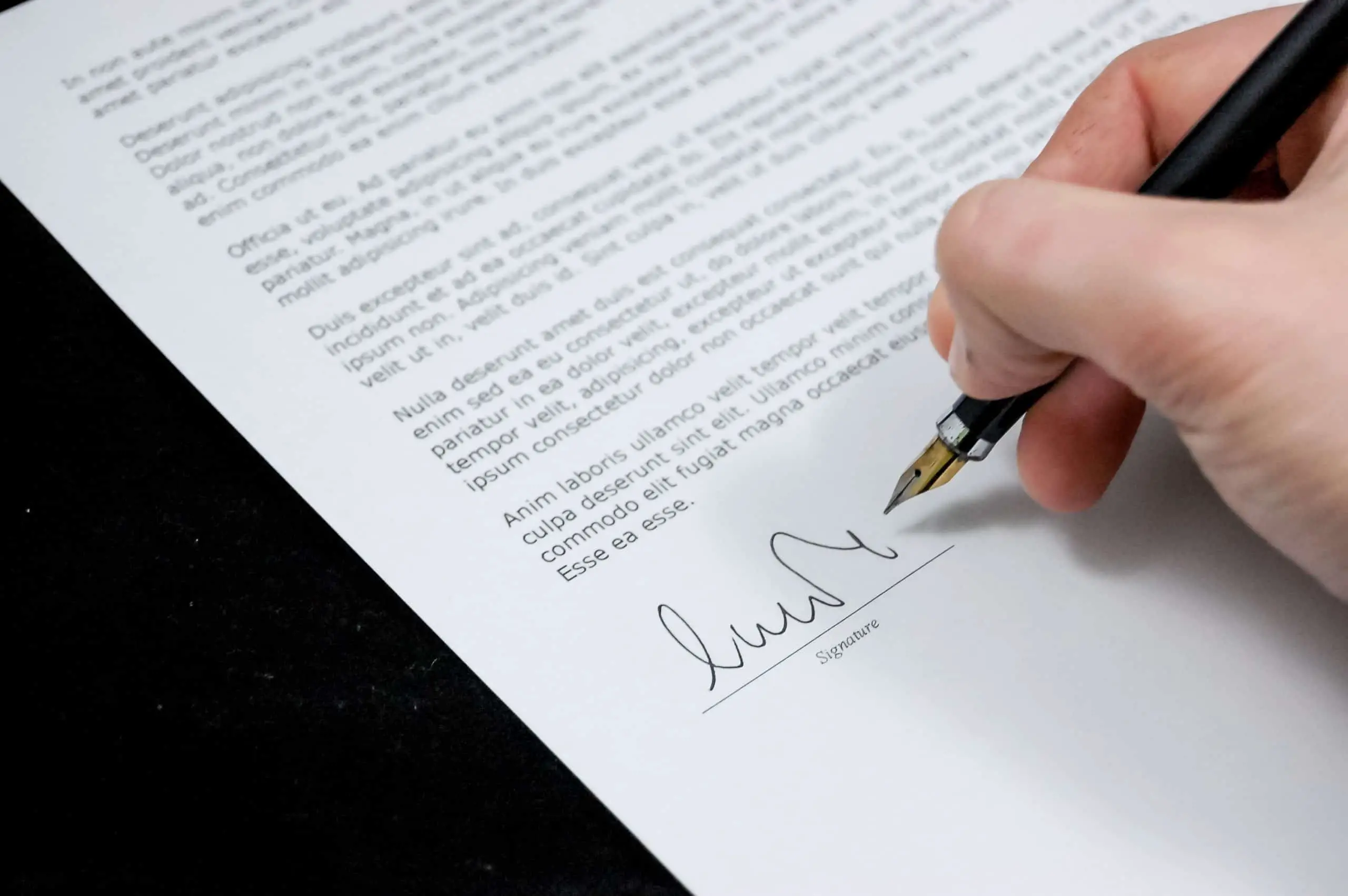609 Dispute Letter – Does It Work And How To Write It?
If you suspect that there’s an inaccurate entry in your credit reports, one of the best options is to count on credit dispute letters to remove it. Still, the terminology here is quite confusing, and who can blame you for mixing up the meaning of dispute letters, 609 dispute letter, and goodwill letters?
By going through this guide, you’ll get to know the essence of the 609 dispute letter as it might not be what most people consider it for. Let’s see how it can help you remove negative information from your credit reports, how it works, and how to send it!
What’s A 609 Dispute Letter?
Since you can probably guess that a 609 letter isn’t a regular dispute letter, what does it help you achieve? Well, the 609 dispute letter actually serves as a request directed to credit reporting agencies to provide documentation that supports the accuracy of your negative listing.

However, many consumers find it to be a legal loophole since it all works based on the Fair Credit Reporting Act. This act secures your right to get a free annual copy of your credit report from each credit bureau once a year and to get information about the lenders and companies that pull your reports.
The Fair Credit Reporting Act further secures your right to question the authenticity of the inputs in your credit report, by asking for proof from the credit reporting agency. However, some information like the original signed copies of your loan applications can’t be provided by the credit bureaus.
So, some may think it’s possible to use this loophole to remove the listings that are accurate. Of course, you shouldn’t look at it from that perspective, since there’s much more to the 609 letters than meets the eye.
Verify The Authenticity Of Information On Your Credit Report
The 609 letter doesn’t give you the right to request information verification that you know the bureaus can’t provide – it rather serves as the right to get any sort of documentation and negative info verification that the bureaus have at their disposal.
So, you can mainly use the 609 letters just like a debt validation letter sent to creditors, as the credit bureaus have to back up the statement in the credit report.
It’s still a delicate subject regarding the type of information that you can verify with a 609 letter. For instance, many consumers think that credit bureaus are obligated to provide proof of their accounts under the 609 dispute letter regulation.
In fact, it’s often referred to as a 609 dispute letter, but it doesn’t really give you the right to dispute anything. It’s the 611 section of the FCRA that gives you the right to dispute negative listings if they prove to be inaccurately included in your credit reports.
Know Your Rights Under The 609 Fair Credit Reporting Act Section
So, now that we’ve cleared it up that the 609 letter isn’t exactly a credit dispute letter, it’s time to give you an idea of what you can use it for. You can send this letter to all three credit bureaus to ask for the following information:
- Verification of the source for any listing
- All soft and hard inquiries
- List of all companies and creditors that accessed your credit report
- Dates and payment amounts for any debt listings on your report
So, these are all the pieces of information that the bureaus have to provide under the 609 section of the FCRA upon your request. Still, section 609 doesn’t say anything about credit disputes.
What’s more, it doesn’t state that the credit bureau should actually give you any further information on specific items, rather than confirm their authenticity. This is where the form of your 609 letters and the polite tone might come in handy.
So, sending a 609 letter is a good starting point for moving on with credit dispute letters based on your rights in section 611, which actually addresses the credit report dispute. Also, you can get clarification of your records and confirm the validity of negative entries, so it’s worth the effort in these situations.
Things You’ll Need To Send A 609 Letter
Before you get to sending the letter, it’s important to include all the necessary identification information so the bureau can easily check your details. This includes both your personal information, and the details regarding the account, so here’s a list of all the necessary items:
- Birth certificate
- Copy of utility bills with your name on it
- Copy of your rental agreement with personal details
- Driver’s license
- Copy of your credit report with the specified account
- Tax information
- Social security card
- Copy of the first page of your passport or ID
You’ll need to provide these details as proof of identity, and it’s best to highlight the section you are referring to in the credit report. That way the bureau will have an easy job of identifying the problematic entry and giving you the source of information on it.
If you are working on your letter with an attorney or law firm, also include the contact info of your lawyer in the letter. Knowing all these details is just a first step since you also need to know how to write a 609 letter for it to work.
Writing The 609 Letter
Now that you’ve gathered all the supporting documentation including a copy of your utility bill, account number, and a government-issued ID, you can get to writing a letter. It’s best to prepare at least 3 copies, as you’ll be sending the 609 letters to all three credit reporting agencies, assuming that the account is listed on all three reports.

Follow these steps if you want to have the highest chance of receiving a swift reply from the credit bureaus:
Step 1 – Start With Your Name, Address, And State The Subject
Writing a 609 letter is much like dealing with the introduction on a dispute letter – you start by listing your name, address, and the item in question. In a polite tone, explain that you have the right under the 609 section of the FCRA to check the source of information on your credit report.
Make sure to immediately state your account number with the highlighted section about the specific item on a copy of the credit report.
Step 2 – Attach Identity Verification Info
Other than your name and address, you’ll also need to include other identification details in the letter, and these can be listed after expressing the rights under the 609 section. It’s common practice to include your social security card, driver’s license, utility bill, and passport page with a photo or ID card.
Step 3 – Finalize The Letter With The Deadline For Credit Bureaus
In the end, finish things off with a plea for the credit agency to investigate the matter and to provide info about the source of the item. Generally, most 609 letters end with a deadline of 30 days given to a credit bureau to investigate the item.
However, it’s not a credit repair secret since the bureaus aren’t obligated to delete the item under this section. For that, you’ll need to submit credit dispute letters. You can still imply some sense of urgency in your letter by mentioning the timeline of 30 days for bureaus to investigate, and hopefully, you’ll receive a reply sooner.
The Final Step – Sending The Letter
Writing the letter leaves you just one step away from submitting it, and you’ll just need to find a certified mail address to send it to the credit reporting agencies. You can find the mailing information online as well.
For Equifax, you can refer to Equifax Information Services LLC and send the letter to P.O. Box 740256, Atlanta, GA 30374.
As it’s advisable to send the letters to each credit bureau, you can use the P.O. Box 4500, Allen, TX 75013 for Experian.
The certified mail for TransUnion is TransUnion LLC, Consumer Dispute Center, P.O. Box 2000, Chester, PA 19016.
All that’s left after this is to wait for the response, and you might be on your way to improving your credit scores by using the reply information. The 609 letters might be a great first step towards sending a proper credit dispute letter that can truly upgrade your credit score.
Final Thoughts
Hopefully, this article helped you to get a few crucial things clear – the 609 letter isn’t a credit report dispute form, and it’s simply a way of verifying the information from the report with a credit reporting agency.
You can, though, obtain relevant information on the source of a listing in your report that might cause you to have bad credit. Use the information in this guide for a proper 609 letter template, and the exact post office address to send the letters to.
Frequently Asked Questions (FAQ):
Do 609 letters work in 2022?
It all depends on how you look at it - 609 letters won’t help you dispute credit report info and raise your credit scores on their own. On the other hand, you’ll get source info clarification for listings in your credit reports from each credit bureau, and you can use this info to decide whether or not to send a proper dispute letter.
What’s the difference between a 609 letter and a 611 dispute letter?
The 609 letter only gives you the right to inquire about the source of the listing and to confirm its authenticity. The 611 letter refers to section 611 of the FCRA, which gives 30 days to credit bureaus to investigate the legitimacy of the listing and remove it from your report if it’s inaccurate.
Do you send a 609 letter to the creditor or the credit reporting agency?
Unlike debt validation letters that are sent to your creditors, you’ll be sending the 609 letters directly to a credit bureau.



